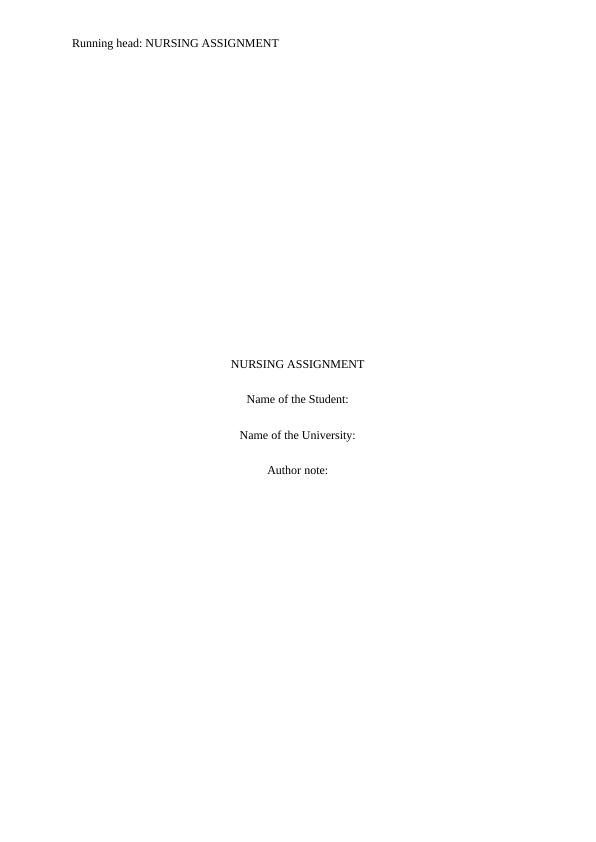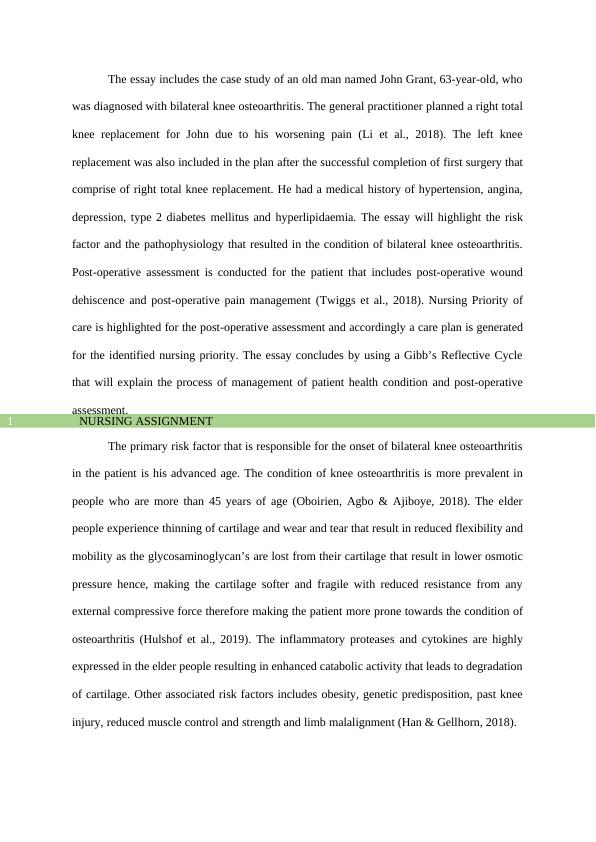Nursing Assignment: Case Study of Bilateral Knee Osteoarthritis
Discuss the assessment of a post-operative client in the clinical scenario and develop a comprehensive care plan to address nursing care priorities.
10 Pages2715 Words396 Views
Added on 2022-11-25
About This Document
This essay discusses the case study of an old man diagnosed with bilateral knee osteoarthritis, highlighting the risk factors and pathophysiology. It also covers post-operative assessment, nursing priorities, and a care plan for wound dehiscence.
Nursing Assignment: Case Study of Bilateral Knee Osteoarthritis
Discuss the assessment of a post-operative client in the clinical scenario and develop a comprehensive care plan to address nursing care priorities.
Added on 2022-11-25
ShareRelated Documents
End of preview
Want to access all the pages? Upload your documents or become a member.
Nursing Case Study on Bilateral Knee Osteoarthritis
|9
|2446
|81
Bilateral Knee Osteoarthritis: Pathophysiology, Treatment, and Nursing Interventions
|11
|2314
|26
Acute Care Nursing: Pain Assessment and Wound Care in Knee Replacement Surgery
|11
|2240
|333
Clinical Case Study on Total Knee Replacement
|6
|1647
|191
Post-Operative Wound Dehiscence: Risk Factors, Assessment, and Nursing Priorities
|8
|2251
|1
Comprehensive Post-Operative Assessments for Acute Nursing
|8
|1910
|70



